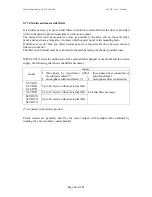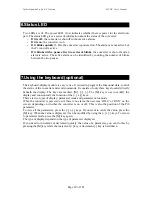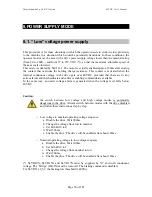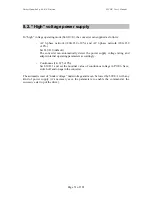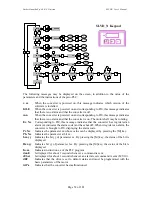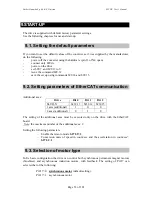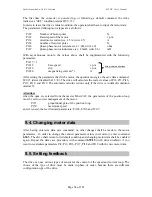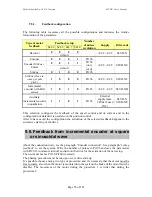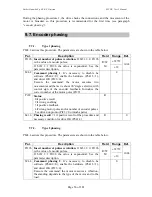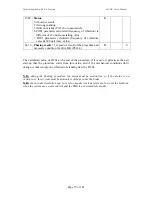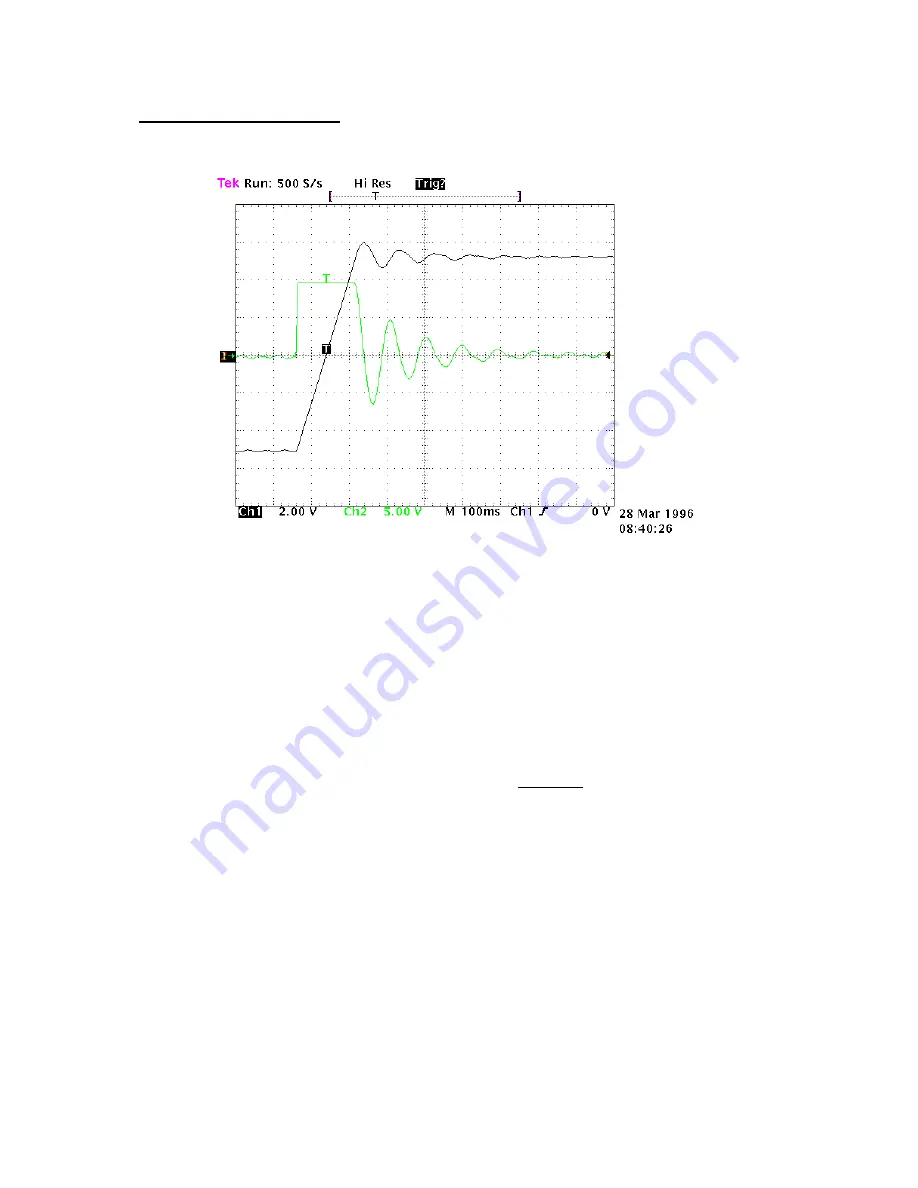
Parker Hannifin S.p.A S.B.C. Division
SLVDN User’s Manual
Page 62 of 181
BEFORE BEGINNING
Study the diagram below carefully (Fig. 1):
Fig. 1
This diagram shows the response of the system to a square wave speed reference. Channel
1 (Ch1) represents the speed and channel 2 (Ch2) the current of the motor. In practice, the
probe has been connected to terminal 6 of the X4 (Vout). The two traces cannot be seen at the
same time, but the trace to be displayed can be programmed using the binary parameter
Pb42.4. The V/div scale and the time basis will not be discussed here since they can vary
greatly.
ESTIMATING THE Pr16
Before turning the converter on, the user should estimate the value of Pr16. The value of Pr16
is what defines the gain of the system. To convert the value of Pr16 into grades per rated
torque, the formula to be used is the following:
α
=
⋅
Pr
*
Pr
*
33 100
16
28
Ipd
where
α
represents the
stiffness and Ipd is the peak current of the drive. Before using the formula, Pr33 must be set
with the correct value of the rated current of the motor. To evaluate the correct value of
α
,
let’s consider that, if the mechanical part to be moved is rigid (non-elastic) and if there is no
transmission play, the optimal stiffness would be about 4 degrees. If the mechanical part is
not rigid enough, it could be necessary to reduce the gain. If the torque of the motor has been
sized in order to obtain strong acceleration, but during the operation, the disturbing torques
are very low, it is possible to choose stiffness angles of 20, 30 or 40 degrees, thereby
maintaining acceptable performance. If it is difficult to choose the proper stiffness angle, the
user can begin with 10 degrees that is the default adjustment if a motor with the same rated
current as the converter’s is used.
At this point, let us set the Pr16 to the estimate and turn on the axis with a square wave
reference. The user must be careful to choose reference ranges and frequencies in order to
avoid problems if the axis has a limited course. By observing the oscilloscope we will note

